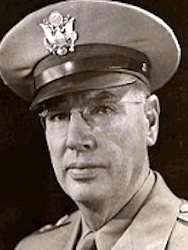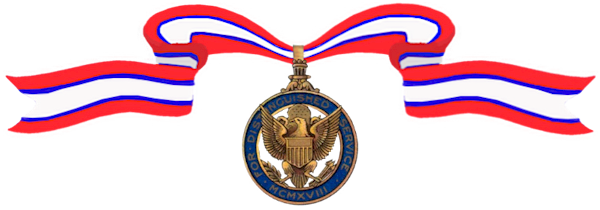George Moore died by his own hand in 1949 as a U.S. Army Major General. His death was attributed to his despondence at his ill health resulting from his years of captivity.

–
Cemetery:
Awards Received
-

Army Distinguished Service Medal
-

Distinguished Service Cross
-

Army Distinguished Service Medal
-
Army Distinguished Service Medal
Service:
United States ArmyRank:
Major GeneralDivision:
Harbor Defenses of Manila and Subic BaysAction Date:
December 8, 1941 – March 11, 9142
War Department, General Orders No. 62 (1942)The President of the United States of America, authorized by Act of Congress, July 9, 1918, takes pleasure in presenting the Army Distinguished Service Medal to Major General George F. Moore (ASN: 0-2677), United States Army, for exceptionally meritorious and distinguished services to the Government of the United States, in a duty of great responsibility, as Commander of the Harbor Defenses of Manila and Subic Bays, from 8 December 1941 to 11 March 1942. The outbreak of hostilities found General Moore’s command prepared and on the alert. The controlled minefields covering the north channel at the entrance to Manila Bay were effectively installed and they, as well as the Navy minefield protecting the south channel, were covered by the guns of the seaward defenses. The anti-aircraft batteries engaged the enemy effectively throughout sustained and repeated high-level and dive bombing attacks, maintaining an extremely high percentage of destroyed and damaged hostile aircraft. Seacoast batteries repeatedly engaged land targets on the Cavite shore of Manila Bay and on the West Coast of Bataan. By daily personal visits to the most heavily engaged elements, General Moore largely influenced the effective action and high morale of his command.
-
Distinguished Service Cross
Service:
United States ArmyRank:
Major GeneralRegiment:
Philippine Coast Artillery CommandDivision:
U.S. Army Forces in the Far East (USAFFE)Action Date:
March & April, 1942
Headquarters, Southwest Pacific Area, General Orders No. 3 (April 29, 1942)The President of the United States of America, authorized by Act of Congress, July 9, 1918, takes pleasure in presenting the Distinguished Service Cross to Major General George Fleming Moore (ASN: 0-2677), United States Army, for extraordinary heroism in connection with military operations against an armed enemy while serving with the U.S. Army Forces in the Far East (USAFFE), as Commander of the Philippine Coast Artillery Command, while in charge of the Harbor Defenses at Manila and Subic Bays, Philippine Islands, during the months of March and April 1942. Major General Moore displayed great gallantry in continually visiting the most exposed elements in his command, and repeatedly passed from one echelon to another during sustained hostile attacks, giving encouragement, directing operations, and by his courage and example inspiring the heroic efforts of his command. The splendid efficiency and dogged determination of this garrison was largely based on his efficiency, tenacity, and individual courage. Major General Moore’s extraordinary heroism, personal bravery and zealous devotion to duty exemplify the highest traditions of the military forces of the United States and reflect great credit upon himself and the United States Army.
-
Army Distinguished Service Medal

War Department, General Orders No. 134 (1946)(Citation Needed) – SYNOPSIS: Major General George F. Moore (ASN: 0-2677), United States Army, was awarded a Bronze Oak Leaf Cluster in lieu of a Second Award of the Army Distinguished Service Medal for exceptionally meritorious and distinguished services to the Government of the United States, in a duty of great responsibility.

